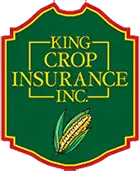Good Farming Practices
Good farming practices protect your investment in crop insurance and help maintain your eligibility for farm programs.
You are responsible for:
- Using good farming practices
- Keeping informed about disease or pest outbreaks in your area
- Keeping informed about what constitutes good farming practices
- Frequently scouting your fields and documenting your findings
- Keeping records of your good farming practices, broken out by each insurable unit, just like your production records
Crop Insurance Covers
Crop insurance covers losses that are unavoidable and due to naturally occurring events. It does not cover losses due to negligence, or any failure to follow good farming practices. Crop insurance policies define negligence as, “The failure to use care as a reasonably prudent and careful person would use under similar circumstances.” A good rule of thumb is that you should follow all the practices considered prudent and responsible by local extension agents and certified crop consultants to produce your crop’s historic yield.
Your Records Are Your Best Protection
Your best protection is to keep detailed records of how what you do to produce and protect your crop. You need to document the time and date of your records. Those records should be kept separate for each insurable unit, just like your production records.
While disease is an insured peril, damage due to insufficient or improper application of available disease control measures is not. You should save your receipts for the purchase of recommended applications and then document when and how you made the application.

